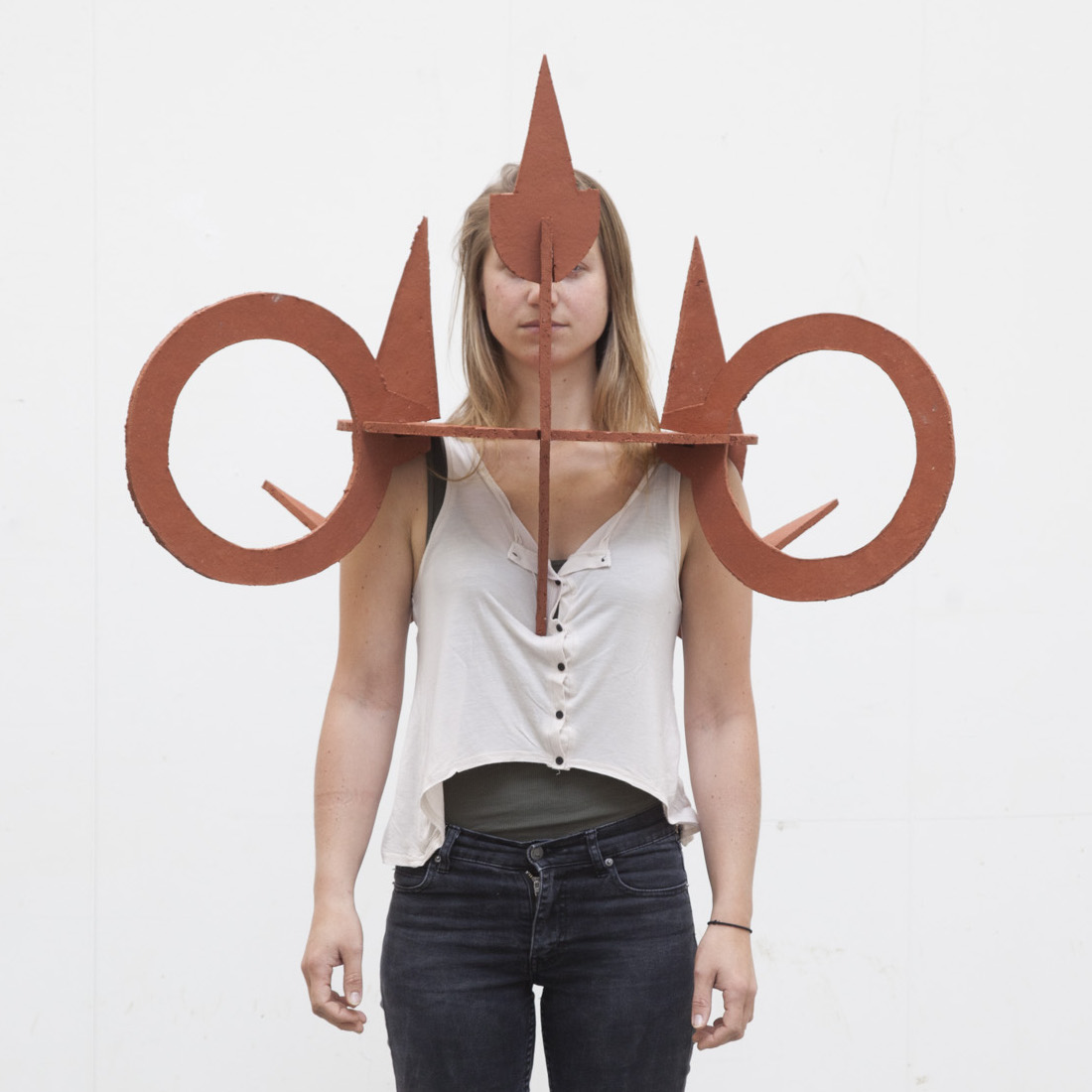AMSTERDAM, The Netherlands — Cotemporary ceramic art sculptor Yasser Ballemans resents how art has become Balkanized from normal life. Art has become more autonomous, not functional, he argues. People encounter it only when they are looking for it, and it’s often stashed in out-of-the-way places such as galleries and museums.
Above image: From Yasser Ballemans’ “Weapons of Choice” series, ceramic, 2014
This makes him pine for a day when that wasn’t the case. He argues that art once held a semi-functional role in rituals such as adorning temples, or stadiums, or victory arches. Whether Ballemans is a grass-is-greener type or whether his idealized past was as ideal as he claims isn’t the point. What matters is that this viewpoint creates in him an anthropological, mythical view of artwork. It gives him an approach, an agenda. He’s inspired by carnivals, not the modern ones, but the ritualized ancient ones, the kind of stuff you’d read about in Frazer. He also is fascinated by ironic trickster deities such as the Wildmen of Europe. It’s important to note that both use ritual as a way to invert order. Wildmen are gleeful sowers of discord and in carnival one might see a peasant elevated to the role of emperor. Also, both carnivals and wildmen dialogue (sometimes very agressively) with the public at large. These are powerful narrative tools for any iconoclast who resents having his work hermetically sealed away inside a gallery. With them, you can revolt against the establishment and power your new paradigm some good fertility juju.
From the artist:
Within this area of tension I’m particularly interested in celebrations and events. Contemporary celebrations are tending to become reduced to relaxing, fun and consuming, whereas traditionally celebrations often mark a transition or constitute a guided moment of catharsis, purification or criticism beyond the everyday order. They regularly contain elements that refer to the basic human passions, such as violence, sex, emotions and irrationality. Rituals and celebrations often are connected to local legends and traditions. I’m trying to find meaningful variations of these rituals in our globalized, secularized and commercialized world. My conviction is that art can deepen and enrich our contemporary rituals and celebrations.
Even with all of the revolutionary bluster, Ballemans isn’t afraid to be vulnerable. His arches and facades are built with his manifesto in mind, but some of them are made with unbaked clay. He states that this “leaves room for imperfection” which is a refreshingly honest thing to read. It’s not hedging, rather Ballemans subjects himself to the same worldview by which he judges the art world at large. Wildmen are chaos. They are not to be trusted and they could easily turn on someone who champions them. Invoking the tricksters recklessly and without any self-awareness would be like ringing a dinner bell. Don’t tempt them.
Enjoy this collection of images we’ve assembled and decide for yourself whether you think Ballemans is on point with his ritual sensibilities. Let me know when the Bacchanalia starts. You can borrow one of my masks.
Bill Rodgers is the Managing Editor of cfile.daily.
Do you love or loathe these works of contemporary ceramic art? Let us know in the comments.














Add your valued opinion to this post.